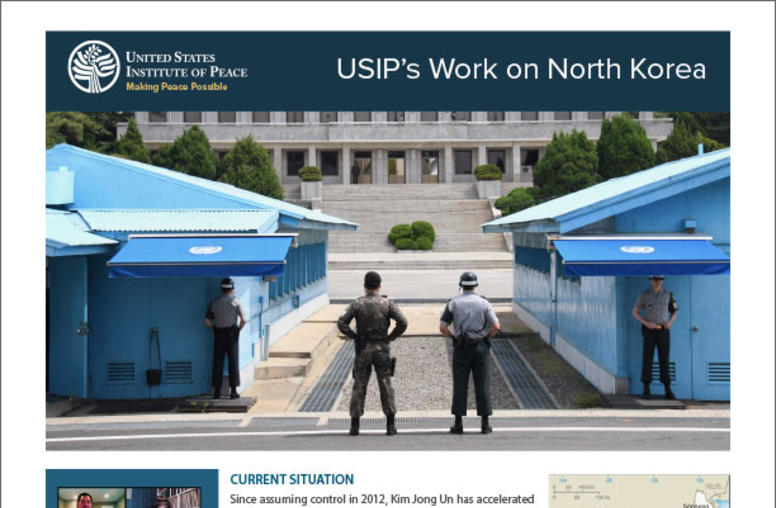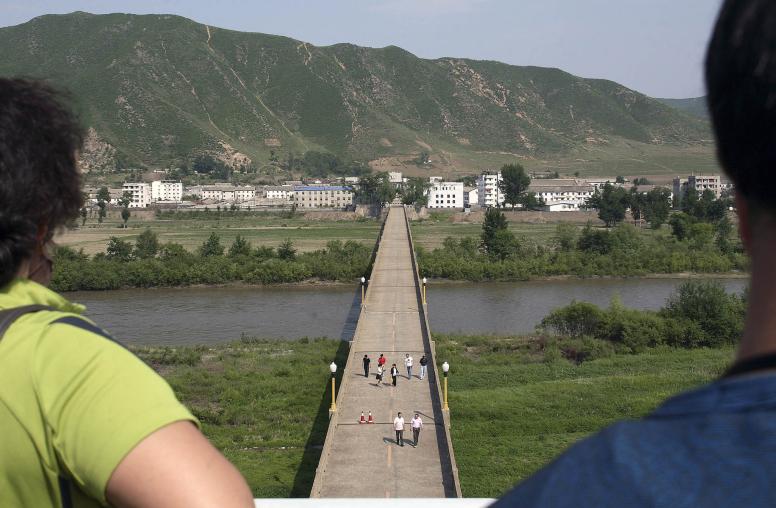A Diplomatic Window Opens, Briefly, on the Korean Peninsula
Last week’s “sports diplomacy” between South and North Korean negotiators—the first direct dialogue in more than two years—was a good first step in reducing tensions on the Korean Peninsula. North Korea’s participation in next month’s Winter Olympics in Pyeongchang, South Korea, along with news that the joint U.S.-South Korean military exercises will be delayed until late April, has produced a rare window of opportunity for diplomatic progress.

Despite these hopeful developments, it’s important to note that no progress has been made on the defining issue of the conflict – North Korea’s ongoing and expanding nuclear weapons program. In fact, the good-natured atmosphere of the first day of talks quickly evaporated during the talks when the North’s chief negotiator threatened to walk out after South Korea raised the issue of Pyongyang’s nuclear and missile programs.
The problem with the inter-Korean Olympic arrangement is that it’s a temporary solution. When the Pyeongchang games end and the joint U.S.-South Korea military exercises resume, the situation will likely revert to square one. To sustain inter-Korean rapprochement and a peaceful atmosphere on the Korean Peninsula beyond the Olympics, South Korea and the United States will need to address three issues:
First, what incentives can be used to ensure that Pyongyang refrains from provocative nuclear and missile tests and remains engaged? Heavy sanctions on North Korea complicate any effort by Seoul to restart joint economic ventures – such as the Kaesong Industrial Complex or Mt. Kumgang tourist area – that could potentially provide Pyongyang with hard currency for its nuclear and missile programs. Even if there is insufficient evidence, as the Moon administration claims, that North Korea diverted wages paid to its workers by South Korean firms at the industrial park to fund its weapons programs, any push by Seoul to restart these ventures could represent the first real fissure in the alliance’s campaign to maximize pressure on North Korea.
A less complicated option, but one that might not be acceptable to Washington, could be to provide humanitarian food aid and other non-cash assistance to North Korea, which is in the middle of a prolonged humanitarian crisis. According to a 2017 United Nations report, an estimated 18 million out of 25 million North Korean people face chronic food insecurity, 10.5 million are undernourished, and 3.5 million have little or no access to safe water, sanitation, or hygiene. Also, a 2017 report by the UN Food Agricultural Organization stated that North Korea is now facing its worst drought since 2001. Despite approving $8 million of food and medical aid to North Korea in September 2017, South Korea still hasn’t confirmed the timing of the assistance due to political considerations.
If humanitarian assistance isn’t sufficient to keep Pyongyang quiet, the second issue is whether to seek a continued suspension of the joint U.S.-South Korean military exercises for the rest of the year in exchange for a continued suspension of North Korean nuclear and missile tests. During the opening session of the January 16 Foreign Ministers’ meeting in Vancouver, Secretary Tillerson dismissed the notion that the United States inadvertently agreed to a dual suspension, reiterating that “we reject a ‘freeze-for-freeze’ approach in which legitimate defensive military exercises are placed on the same level of equivalency as the DPRK’s unlawful action.”
The U.S.-South Korean alliance may want to consider creative modifications to the dual freeze model, such as scaling back exercises that incorporate strategic assets, muting the messaging of the exercises, or demanding that North Korea suspends its own conventional military exercises. Otherwise, the Olympic deal will have only bought a few months of respite.
The third issue is whether the pause in nuclear and missile tests during the Olympic period will create the political space to re-engage in diplomatic talks with North Korea. Despite earlier U.S. vacillation about the necessary preconditions for returning to dialogue with North Korea, it seems clear today that Washington has two requirements for beginning talks-- a freeze on North Korean nuclear and missile tests and Pyongyang’s willingness to put denuclearization on the agenda. The inter-Korean talks seem to have secured the first precondition from North Korea; the alliance now has three months to decide whether to remain firm on the second one.
If the joint military exercises resume in late April, it will be interesting to see how the North responds. The exercises are not only an irritant to Pyongyang, but their timing in May would complicate the Korean People’s Army’s military readiness. May is the rice planting season in North Korea, and the regime typically uses its soldiers to pitch in. It will be difficult for the soldiers to help with planting while also maintaining defensive readiness against American-South Korean exercises that North Korea claims are preparations for invasion.
The diplomatic window of opportunity is open for now, but it won’t be for long.



